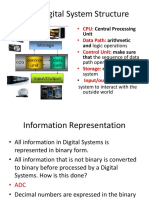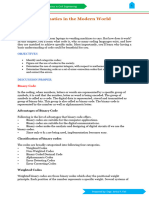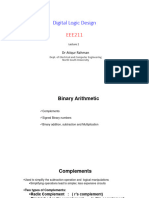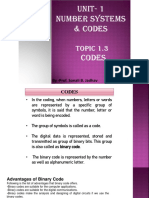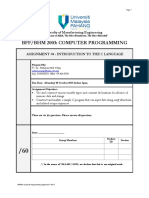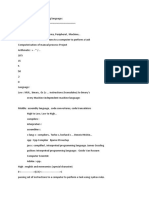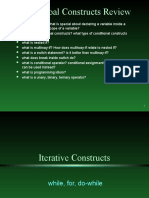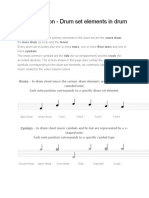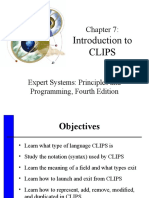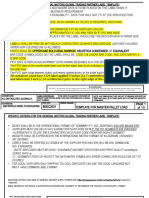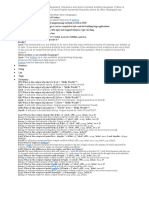0% found this document useful (0 votes)
108 views27 pagesDigital Logic Design
This document discusses binary coded decimal (BCD) codes. BCD codes represent decimal digits using 4-bit binary codes so decimal numbers can be processed digit-by-digit in computers. Addition in BCD follows the steps of binary addition but involves correcting invalid BCD results by adding 0110 to produce the proper digit and carry. An example shows the addition of 184 + 576 in BCD.
Uploaded by
eg・ BUGGSCopyright
© © All Rights Reserved
We take content rights seriously. If you suspect this is your content, claim it here.
Available Formats
Download as PDF, TXT or read online on Scribd
0% found this document useful (0 votes)
108 views27 pagesDigital Logic Design
This document discusses binary coded decimal (BCD) codes. BCD codes represent decimal digits using 4-bit binary codes so decimal numbers can be processed digit-by-digit in computers. Addition in BCD follows the steps of binary addition but involves correcting invalid BCD results by adding 0110 to produce the proper digit and carry. An example shows the addition of 184 + 576 in BCD.
Uploaded by
eg・ BUGGSCopyright
© © All Rights Reserved
We take content rights seriously. If you suspect this is your content, claim it here.
Available Formats
Download as PDF, TXT or read online on Scribd
/ 27






